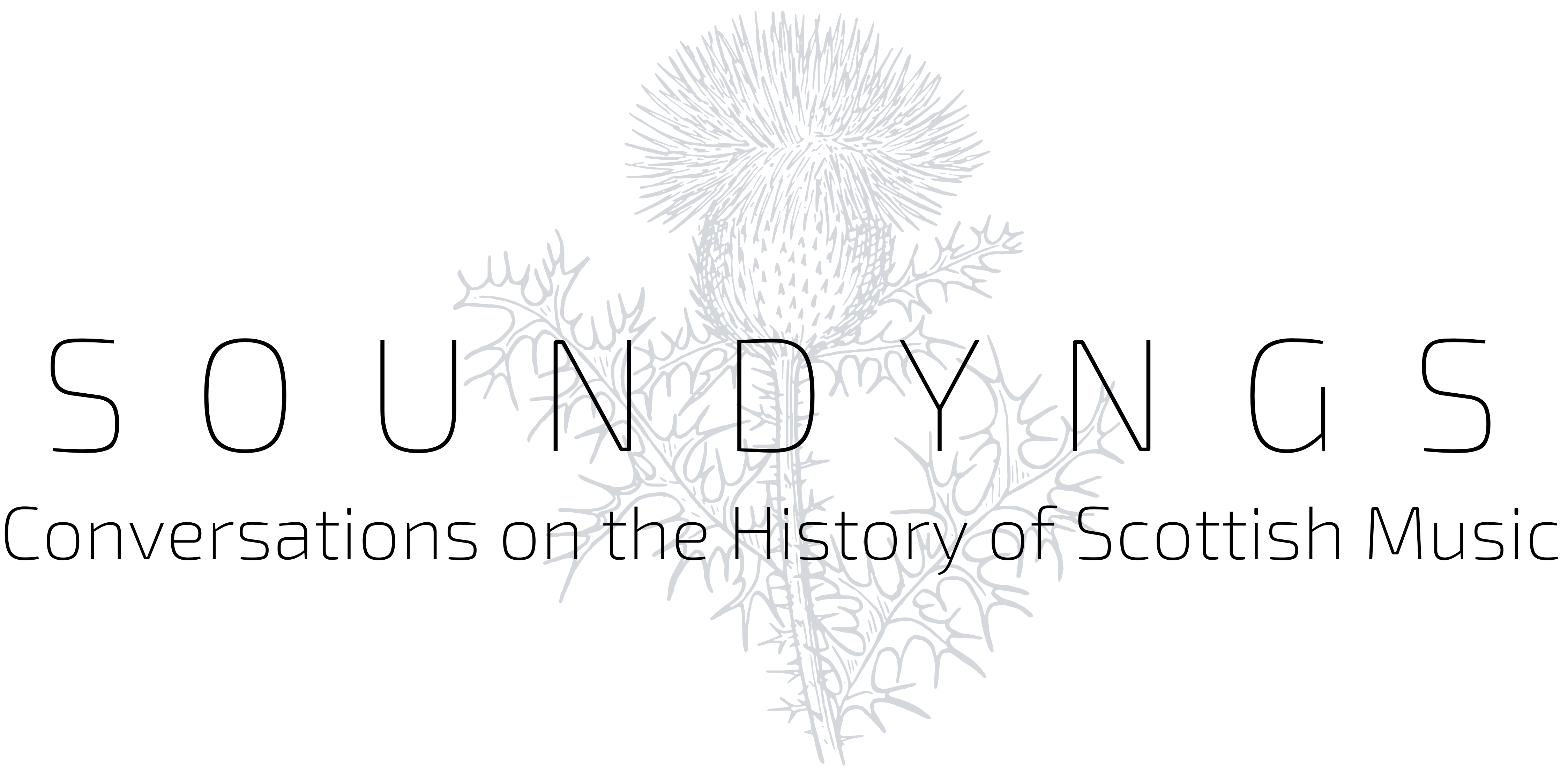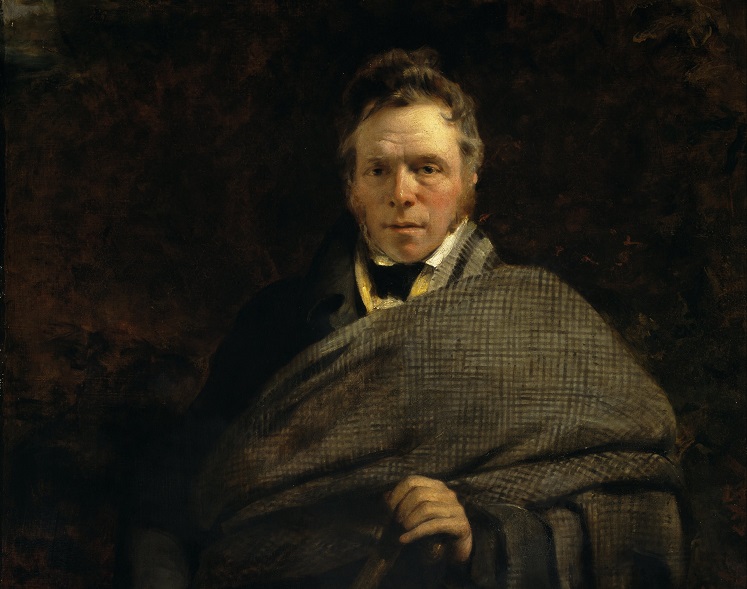Image: “James Hogg, Poet, ‘The Ettrick Shepherd’”, painted by Sir John Watson Gordon in 1830. CC Wikimedia Commons, courtesy of the Scottish National Gallery. ccWikimedia Commons.
James Hogg (1770-1835) has long been known for his brooding gothic novel of Scottish Calvinist anxiety, The Private Memoirs and Confessions of a Justified Sinner (1824). However, Hogg’s importance as a serious lyrical poet and significant collector of traditional song took longer to be fully appreciated. The Stirling/South Carolina Research editions of his collected works, which has been publishing his extensive writings with editorial notes and critical apparatus over the last decade, has taken huge strides to place Hogg at the centre of Scottish Romanticism, in association with and indeed rivalling Walter Scott. Longer-lived than Robert Burns, Hogg’s writing embraces many more genres. No fewer than 34 volumes are now in print from this series, encompassing Hogg’s contributions to contemporary periodicals both at home and abroad, his novels, short lyrics, and longer narrative poems, moral essays, letters, diaries and topographical writing about Scotland. Hogg emerges from this as a chronicler of Scotland’s places, peoples and history, as well as a powerful tradition-bearer of Scots song.
One particular volume in this series helps readers to understand why Hogg matters to Scottish song. Contributions to Musical Collections and Miscellaneous Songs, edited by Kirsteen McCue, is designed to be read alongside the individual facsimile volumes of Hogg’s poetry, and recommends itself as a key companion work to his final collection of songs, Songs by the Ettrick Shepherd (1831), the book which Hogg compiled as an accessible ‘best of’ anthology late in his career. Songs by the Ettrick Shepherd includes 113 lyrics dating from his earliest poem to appear in print (‘Donald MacDonald’ of c1803) to some written immediately before that collection. Hogg’s selections provide an insight into what he himself thought made a good song; the notes he provided here and elsewhere throughout his career also provide insights into the networks of publishers, performers and fellow writers and composers who helped to disseminate this material. McCue argues and capably demonstrates that this collection articulates Hogg’s sense of his place in the Scottish pantheon of writers: “Hogg was able to stake his claim as Scotland’s most important songwriter since Robert Burns” (abstract).
McCue’s introduction to Contributions sets Hogg’s writing outputs in biographical context, acknowledging that in some cases, exact dates are hard to establish (best guesses are given in [] rather than ()). The sheer quantity of work makes it obvious that there was a lively demand for Scots songs. This material might be sung in a wide range of different ways, as McCue illustrates using quotes from Hogg’s novel The Three Perils of Women (1823). In that book, a traditional Scotsman praises women who sing Scots songs at their supper tables, to ‘native melodies’ unaccompanied by ‘thurmming and bumming at a piano’: neatly, this acknowledges both styles to be present in contemporary practice. Clearly many styles were common in the 19th century, and Hogg’s publications were carefully positioned in this thriving marketplace to connect across the spectrum. Indeed, his work contributes to a growing space for Scottish music publication in the 19th century. Elsewhere, in his popular narrative poem The Queens Wake (1813), Hogg imagines an historical culture of Scottish singing competitions in the time of Mary Queen of Scots, led by professional ‘bardic’ figures such as (one imagines) himself (p.xxiii-iv); by the end of the 19th century, music compositions submitted for public competitions advertised by choral societies and other institutions had become again normal in Scotland, albeit now under middle-class patronage. Hogg was both a chronicler and part of the engine that drove this period of musical revolution.
Music held a high place in the Romantic imagination. Hogg’s poem The Pilgrims of the Sun (1815) discusses the book’s heroines hearing angels singing and playing the harp as they journey towards heaven: music was felt to elevate the soul, and those involved in musical projects may have had high cultural aspirations. Unlike Walter Scott, who loved songs but was not a practical musician, Hogg had a well-developed musical ear and memory: he could play the fiddle and loved to sing, although in his own words, he was ‘no gude singer’ but neverthelsee could claim to be ‘the best sang writer in Scotland’ (McCue, p.xxviii). Hogg worked with Walter Scott when the latter was preparing his Minstrelsy of the Scottish Border (1802), and impressed Scott at that point with his knowledge of Scots ballad repertoire. Together with James Macpherson’s Ossianic ballads, Scott’s Minstrelsy sealed the reputation of Scotland throughout Europe as a place steeped in song. This connection with Walter Scott placed James Hogg at the centre of Scottish cultural activity at a point when its literary outputs were at their most internationally prestigious. Walter Scott’s influence networked Hogg with leading publishers both in Edinburgh and London. Albyn’s Anthology (1816 and 1818) was published in Edinburgh by Alexander Campbell, a friend of Scott’s; Twelve Vocal Pieces (1817) was published in London by another of Scott’s connections, John Clarke-Whitfield. Hogg’s poems found their way into George Thomson’s anthologies of Scottish drawing room music (his ‘select’ collections and melodies, arranged by famous German composers); and, reaching beyond the Scottish indigenous lyric to connect with another site of Romantic lyrical imagination, Hogg’s German Hebrew Melodies (1817) responded to Byron, Isaac Nathan and John Braham’s Hebrew Melodies of 1815.
Walter Scott, however, aimed to place Scottish songs and ballades at the ‘high end’ of the European print market. The Minstrelsy, for example, tidies up irregularities, and appeared in a finely produced hardbound book accompanied by engravings of the castles and landscapes which helped its international readership to imagine Scotland as a prototypically Romantic culture. This was an anthology to be read, not sung. Hogg’s background and writing persona, in contrast, placed him more directly alongside the grass-roots origin of the ballad material. This may have made him more sensitive to the fundamentally musical nature of this repertoire: Hogg’s mother was said to have berated him for making oral material into an inanimate book. McCue’s volume includes facsimiles of specifically musical collections published between 1816 and 1834, along with miscellaneous songs, with printed musical score, and citing specific Gaelic as well as Scots melodies, which demonstrate that Hogg knew exactly how lyrics needed actual tunes. For those interested in the curation and transmission of traditional melody, Hogg’s output provides a wealth of information about actual music as well as words. However, Hogg’s embrace of the low along with the high end of the market, suggests McCue, meant that his reputation for a time sat lower than Walter Scott’s. However, it was Hogg’s willingness to embrace lower-end popular taste as well as the elite market that now is revealed as his greatest strength.
Songs by the Ettrick Shepherd, Hogg’s legacy anthology, clearly sold well around the world as well as in Scotland, but is the tip of a much larger mountain of work which made a significant contribution to the presence of Scottish song in the British isles and indeed internationally, helping to fuel a rapid growth in music publication. McCue describes the changes in Scots song performance culture which took place between the 1790s and the 1820s. At the start of this period, when Johnson and Burns’s Scots Musical Museum was planned and marketed to gentlemen musicians of an antiquarian inclination, Scots song circulated in relatively rarified elite amateur circles. By the end of the period, a rapid growth in middle class domestic music making had opened up a more popular market for fashionable Romantic music. While cultural milestones such as The Scots Musical Museum and the Border Minstrelsy gave this repertoire initial cultural weight and glamour, it was the cheaper anthologies and sheet music which gave it wings and wider popular impact. Burns died before he could fully benefit from this, but Hogg, the ‘border shepherd’, projected the demotic identity which aligned his own reputation with the popular end of Scots song. The structure of McCue’s compendium – the first half of anthology pieces and the second of sheet music songs – helps to make his drive for popular accessibility clear, with notes about relative costs demonstrating how sheet music compares with a range of differently priced anthologies (p.xxxv).
What is also clear is the recurrence of themes attuned to a market demand for Romanticised Jacobitism and rose-tinted Scottish history: songs about Bonny Prince Charlie, and those associated with his heroic failure such as Flora Macdonald, feature prominently, for example, and Hogg contributed to the popular reimagining of Mary Queen of Scots as a tragic heroine. If Walter Scott repackaged Scotland’s past in historical romance fiction, Hogg helped to domesticate it in parlour songs. And not just songs sung in parlours: notes to these songs show they were sung in the Theatre Royal in London’s Covent Garden, and by leading professional singers such as Edinburgh-born tenor John Wilson, whose musical tours took him to America in the late 1830s, and whose concerts in the 1840s invariably included songs by Hogg.
McCue’s introduction flags other areas of interest to researchers interested in the transformation of music publishing in the early 19th century. Hogg’s issues with music copyright which impacted all songwriters in this period (he himself was accused of plagiarising at times) helps us think about the tension between curation of tradition and literary revision. McCue also includes an appendix of Hogg’s songs printed during his lifetime but possibly without his consent or even knowledge, in America and Germany. McCue writes: “it is worth noting that a large number of unauthorised versions of Hogg’s songs appeared during his lifetime and beyond across a wide variety of popular print formats, including chapbooks. These are not included in the present edition, though reference to important individual appearances is given in notes to the songs concerned where appropriate” (p.xliv).
The notes to the individual anthologies contain an absolute wealth of information about each collection’s history of production. Alongside the words and music and notes written by Hogg himself, this is a hugely important book in a wonderful academic series.
Songs by Hogg are presented in this book from the following anthologies: Albyn’s Anthology (1816 and 1818); Twelve Vocal Pieces [1817]; German Hebrew Melodies [1817]; A Select Collection of Original Scottish Airs v5 (1818); Thomson’s Select Melodies of Scotland (1822-1825); The Melodies of Scotland v6 (1841); A Border Garland [1819]; The Scotish (sic) Minstrel [1821-1824] and (c1828-1837); The Irish Minstrel [1825]; Select & Rare Scotish (sic) Melodies [1828]; The Border Garland (c1829); The Harmonicon (1829 and 1832); Original Scottish Melodies [1834]. Read these, and also Songs by the Ettrick Shepherd, also edited by McCue and published separately.
Further Online Reading:
For the full list of publications associated with the Stirling / South Carolina Collected Works of James Hogg, published by Edinburgh University Press especially:
- James Hogg, Contributions to Musical Collections and Miscellaneous Songs, edited Kirsteen McCue (Edinburgh University Press, 2015), available as an ebook from 2022.
- James Hogg, Songs by the Ettrick Shepherd Kirsteen McCue, The Stirling / South Caroline Research Edition of the Collected Works of James Hogg (Edinburgh University Press, 2014)
Kirsteen McCue’s research outputs e.g. Hogg’s interest in songs about Mary Queen of Scots – see her University of Glasgow School of Critical Studies research portal.
The National Library of Scotland’s website e.g.
- Graham Hogg, Walter Scott and The Minstrelsy of the Scottish, Border Blogpost, National Library of Scotland, 2021
- NLS on James Hogg, with digitised letters from Hogg to publisher John Murray

